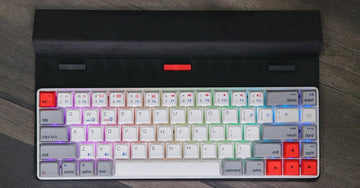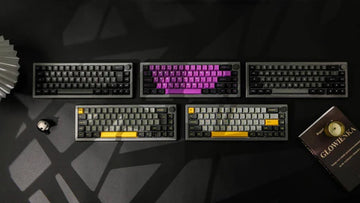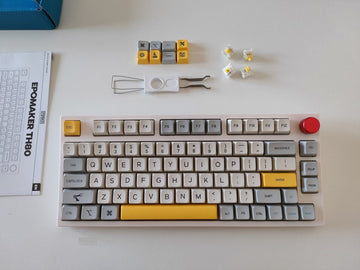2021 September Epomaker Keyboard Review: NT68, GK108S Kit, SK61
によって Freya Tong オン Oct 15, 2021


"I certainly have mixed feelings about the Epomaker NT68, and I went in quite curious about how the keyboard would differentiate itself from other 65% keyboards we have seen thus far, including some from Epomaker itself. I suppose it's a good thing I don't rate any products in the crowdfunding stage, but having compared both the regular and low-profile versions of the keyboard, I can clearly say this is the one of the two to get, if at all."
>>Read more on the full review article


"Profile switching and the various other functions necessary on this 65% keyboard are all pre-programmed and tied to the Fn key layer, which is critical on smaller form factor keyboard. Epomaker/Skyloong has also added some multimedia and volume controls in addition to other program shortcuts. These are denoted by extra legends on the keycaps, which reduces the learning curve significantly, but layers are your friend here, and key mapping is just as useful in making your time with the keyboard a pleasure rather than a pain. ... The general answer for all smaller form-factor keyboards tends to be ergonomics, with shorter finger travel leading to lower fatigue over longer typing sessions. You can also have the mouse closer to the keyboard and in line with your shoulder. "
>>Read more on the full review article


"Enter Epomaker’s GK108S. This $90 kit (there's also the cheaper, wired GK108) has room for a full 108 keys while providing built-in Bluetooth connectivity, RGB lighting and a sturdy-feeling steel plate, many of the same traits found among the best wireless keyboards sold prebuilt. The GK108S couldn’t be much easier to set up, as it comes pre-assembled and uses hot-swappable sockets that support either 3 or 5-pin switches. That means absolutely no soldering when you want to change your mechanical keyboard switches."
>>Read more on the full review article


"One of the strengths of this keyboard is that the switches are hot-swappable, that is, they are not soldered and we can remove them simply by pulling them, although better with the help of the supplied tool. In this way we can customize them as desired without the slightest problem. Of course, RGB LEDs are built into the chassis itself, which makes them cheaper than other alternatives." in Italian
>>Read more on the full review article






